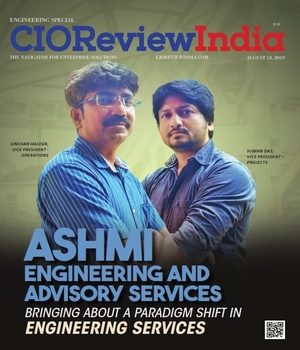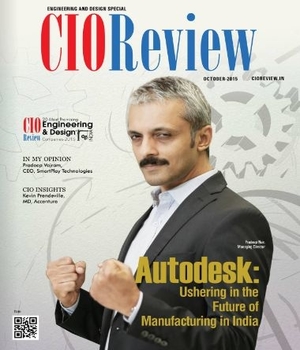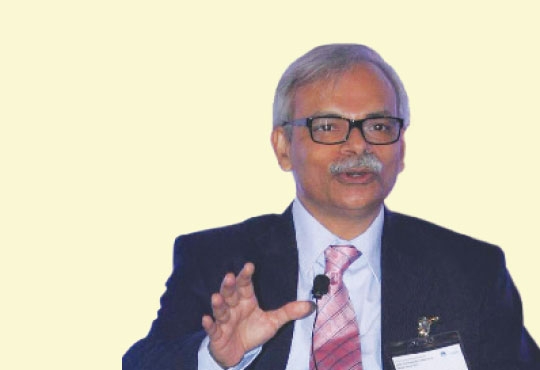
Opportunities for Integration and Innovation
Nicholas J. Smither , Group VP & CIO, Ford | Thursday, 25 August 2016, 08:39 IST
 The industry is going through a sea of change with several trends assuming significance. Efforts over past decades have shifted focus from transactional process automation (e.g. payroll, finance and accounting applications) in the eighties to driving improvements in time to market through product simulation and manufacturing automation using CADCAM/CAE during the nineties. Across the extended enterprise, there have been continuous improvements with increased integration of supplier and dealer capability. More recently the focus has been to shift from mainly an efficiency or productivity motivation, to enabling top line growth and revenue.
The industry is going through a sea of change with several trends assuming significance. Efforts over past decades have shifted focus from transactional process automation (e.g. payroll, finance and accounting applications) in the eighties to driving improvements in time to market through product simulation and manufacturing automation using CADCAM/CAE during the nineties. Across the extended enterprise, there have been continuous improvements with increased integration of supplier and dealer capability. More recently the focus has been to shift from mainly an efficiency or productivity motivation, to enabling top line growth and revenue.
The present technological era is more focused on full integration of these systems with a vision to drive seamless processes across the entire digital enterprise. There is a very significant focus in the connectivity space. The industry focus has historically been on business connectivity with key partners, including dealers and suppliers. More recently Ford has extended connectivity to include the Vehicle and the Customer with SYNC and My Ford Touch. As technology advances continue and consumer expectations relative to connectivity increase, there is untapped potential to enable rich customer experiences both inside and outside the vehicle.
Although these developments have resulted in unprecedented growth in capabilities, there is still much room for advancement. The one feature which could prove a game changer in the employee connectivity space is a holistic, multiple platform solution for secure enterprise adoption of BYOD. There are many point solutions available today, but opportunities for a fully integrated and secure solution with capability for both individuals and enterprises remain, and offer the potential for increased productivity and efficiency.
Priorities for a CIO
I believe the majority of CIOs face the same challenge: Building organizational capability and human capital to support unprecedented levels of business demand. Business demand for most organizations is coming from three sources: 1) The need to Integrate, 2) Technology Innovation, and 3) Legacy Technology management.
Integration: Most companies have developed applications to support individual activities, based on functional or geographic needs. Those that have addressed cross regional and/or cross functional integration may be challenged with new market or new acquisition integration. In addition, every company has opportunities to integrate new technology capabilities. In Ford’s case, one example is a need to expand the scope of IT into the vehicle.
Technology Innovation: We are fortunate to work in a profession that is constantly changing. Many of the technologies we are deploying today did not exist a few years ago, and that lifecycle continues to accelerate. A great example is the impact that the smartphone has had on personal productivity and customers’ expectations on how they expect to interact with enterprises. Every business domain has many technology opportunities that can drive efficiency or growth that did not exist a year ago.
Legacy Technology management: Unless you are the CIO of a startup, you have valuable assets that require refresh, as technologies become un-supported or in-efficient. Platforms need to support higher levels of integration and enable mobile access that may not have been previously required.
I believe that these demand drivers will continue to have a compounding effect in driving IT demand as companies see the benefit of the fully integrated Digital Enterprise. The challenge for us at Ford is to ensure that we are building the organizational capability and human capital required to improve the business whether it’s for productivity or top line revenue growth.
Towards Innovation
At Ford, innovation is in the heart of our DNA, which started with the ModelT and the moving assembly line, and is more recently illustrated by SYNC, EcoBoost and the Aluminum F-150. Internally, we are at our very best when we democratize innovation to make it accessible to all. Innovation is a concept that goes beyond the headline grabbers to enabling continuous improvement at all levels. As a result, we deploy a wide range of innovative activities on a global basis.
To encourage this effort throughout our IT team, we take several approaches to encourage creative thinking. We have initiated innovation contests organized by IT, but open globally to everybody inside the company. We have also established an IT innovation fund to enable ideas to be taken through Proof of Concept to validate feasibility and benefits.
Our approach also means reaching out to external participation. For example we recently launched the Ford Innovate Mobility Challenge Series,which allows anyone to use Ford’s OpenXC open-source software and hardware platform to experiment with do-it-yourself projects using real-time vehicle data. Developers can use OpenXC data like any other data source in a smartphone, tablet or web app.
As Ford approaches the sea of change in which we live, we look forward to working on solutions together.
CIO Viewpoint
Some Other Aspect of Solution Selection
By Shiv Shankar Datta, Head IT, FCA Fiat Chrysler Automobiles
Technology - The World of Iron and Steel
By Ashok Kumar, CTO,Tata Steel
Top 5 Must-Haves to Make Smart City a Success...
By Ankush Tiwari, CTO, Mobiliya Technologies
CXO Insights
Design as a Service: Done Right
By By Debprotim Roy, Founder & CEO, Canvs
Engineering Discipline is Catalytic for Overall...
By Pradeep Vajram, CEO, SmartPlay Technologies
Should a CIO Invest in Product Development?



.jpg)
.jpg)





